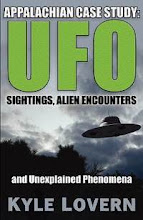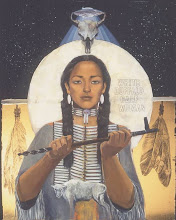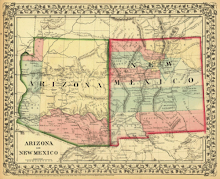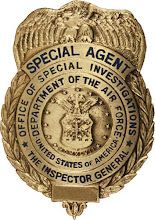By Steve Hammons
Filming for the upcoming movie “Hillbilly Elegy” is underway and the cast and crew, including director Ron Howard, will soon be heading to Middletown, Ohio, just south of Dayton in the southwestern part of the state.
Middletown is where part of the personal story of author J.D. Vance takes place. His best-selling and controversial non-fiction book of the same name tells a story about his upbringing in Middletown and Kentucky.
Meanwhile, historian David McCullough’s latest book “The Pioneers” takes a deep look at the changes that occurred in southeastern Ohio on the other side of the state in the late 1700s and early 1800s.
The American Revolution had ended and the new government of the United States of America claimed vast lands in Ohio and beyond, previously claimed by the French and British. The Northwest Ordinance of 1787 established how these lands would be settled and governed.
And Season 2 of the popular History Channel TV series “Project Blue Book” about the U.S. Air Force UFO research program is in the works, with a teaser-trailer on the Roswell incident recently released.
The real Project Blue Book was based at Wright-Patterson Air Force Base in Dayton (home of the Wright brothers) and officially operated from 1952 to 1970. The TV series is set there, with the Air Force investigators traveling to sites of UFO-related incidents.
On the surface, there does not seem to be any connection in these current and prominent media projects, other than the link to southern Ohio. Yet, maybe there are some common denominators and overlapping elements that could be interesting.
WHAT’S PAST IS PROLOGUE
One obvious overlap is that “Hillbilly Elegy” author J.D. Vance spent part of his challenging youth in Middletown in the 1980s and ‘90s, 27 miles south of Dayton. Project Blue Book had been investigating UFO incidents from Dayton for 20 years until more than a decade before Vance was born in 1984.
And while McCullough’s New Englander Revolutionary War veterans and investors were buying a piece of newly-available real estate in the deep forests and hills of southeastern Ohio (and founding Ohio University in Athens), others were eyeing southwestern Ohio around what is now Cincinnati (named after a Revolutionary War Continental Army officers' group).
Just north of Cincinnati along the Great Miami River, the towns of Hamilton, Middletown and Dayton sprang up. Today, this area is considered barely outside the official Appalachian region.
As McCullough explains in his book about southeastern Ohio, the designation of the new “Northwest Territory” (Ohio, Indiana, Illinois, Michigan, Wisconsin and part of Minnesota) as a non-slavery region led to other significant historical developments. It provided a moral compass of sorts, at least on the slavery issue.
This takes us back over to the southwestern side of Ohio again, because when the Northwest Territory was designated non-slave, many Quakers throughout the colonies, and the new U.S., moved from the South to north of the Ohio River.
Quaker migration to the colonies from England, Scotland and Ireland began in the 1600s and many settled in the southern colonies. They witnessed slavery first-hand. Slavery was not consistent with Quaker beliefs and perspectives.
As a result, when the Ordinance of 1787 passed, many Quakers headed north of the Ohio River (as did many African-Americans escaping slavery). An area just north of Cincinnati between the Great Miami River and the Little Miami River was sold by the government to investors and Quaker settlers, known as the Symmes Purchase or Miami Purchase.
The lands that were part of the Symmes Purchase extended up to the Dayton region.
Famous "Wild West" sharpshooter Annie Oakley was actually a Quaker girl from rural southwestern Ohio, still an area of many Quaker communities today.
And there are stories of significant Underground Railroad activities in the area involving local Quakers during slavery and the Civil War.
Pioneers, Quakers … and hillbillies. Southwestern Ohio and Cincinnati, Hamilton, Middletown, Dayton and points north and northwest have historically been towns where Kentuckians and people from the southern Appalachian Mountain region have migrated, looking for economic opportunity.
Hamilton, just south of Vance's hometown of Middletown, is known as “Hamiltucky.”
Pioneers, Quakers, hillbillies … and Germans. Several waves of German immigrants migrated to the Cincinnati area and southwestern Ohio, largely starting in the mid-1800s. Cincinnati was one of the major centers of German immigration to America. German culture is still a big part of the Cincinnati region.
Following World War II, when German rocket scientists were brought to the U.S. in “Operation Paperclip,” they were flown into and spent time at Wright-Patterson AFB in Dayton, a major Air Force aerospace research center. These Germans became key scientists for NASA and the U.S. space program (an issue explored in Season 1 of the "Project Blue Book" TV series).
Pioneers, Quakers, hillbillies, Germans … and UFOs. Wright-Patterson is not only associated with Project Blue Book, it has long been proposed that material from the alleged Roswell UFO crash in the summer of 1947 was flown promptly to Wright-Patterson for examination because the base was a center for foreign aircraft analysis.
What else about the southern Ohio area might add another enlightening, or confusing, puzzle piece to the mix?
Pioneers, Quakers, hillbillies, Germans, UFOs … and Native Americans.
HOSTILE ALIENS INVADE
When the new post-American Revolution U.S. government claimed the lands of the Northwest Territory that the British and French had previously claimed, no one checked with the Shawnee, Miami, Erie, Delaware, Huron, Wabash, Potawatomi and other Native peoples who lived there.
In Ohio, the Shawnee were a significant presence in both the southeast and southwest parts of the state. In southeast Ohio, the Shawnee, Mingo and Delaware fought the new pioneers and the military forces backing them at the bloody Battle of Point Pleasant near the Ohio River in 1774 (the site of UFO and multiple unconventional incidents in 1966-67).
The Shawnee kept fighting to protect their Ohio lands and way of life all the way to 1794 and the Battle of Fallen Timbers in northwestern Ohio. The famous Shawnee leader Tecumseh led an alliance of several tribes, but they were defeated by Gen. “Mad” Anthony Wayne’s troops and a force of Kentuckians.
Tecumseh's father had been killed 20 years earlier in the Battle of Point Pleasant.
Interestingly, Tecumseh was reportedly born on the Mad River near Dayton. Wright-Patterson AFB is located on that same river.
And just a bit northwest of Hamilton is Oxford, home of Miami University of Ohio, named for the Miami Indians of the area. In 1997, the school changed its mascot name from the Miami University Redskins to the Miami University RedHawks.
While the Shawnee homeland was north of the Ohio River (reportedly named from the Seneca word or words "Ohiyo" or "Ohi yo") to the south of the river were Cherokee lands in the southern Appalachian mountain region. Cherokee territory spanned parts of what are now Kentucky, West Virginia, Tennessee, Virginia, North Carolina, South Carolina, Georgia and Alabama.
The Cherokee intermixed and intermarried with white settlers, explorers, traders and hunters. Anglo, Scottish and Scots-Irish men found that Cherokee women were ready, willing and able to establish romantic encounters, relationships and marriages, notably in the 1700s. Mixed-ethnicity children were born.
Subsequent generations of these kids intermarried and continued marrying into the larger regional and U.S. population. This Cherokee genetic heritage is reportedly widespread in the southern Appalachian region, surrounding areas and beyond.
In fact, many mixed-ethnicity people of the region transitioned to the Anglo, Scottish and Scots-Irish names of their fathers and grandfathers (a big change from matrilineal, female-oriented Cherokee clan culture), could “pass as white,” and in many cases were mostly white.
This became important when Cherokees were rounded up at gunpoint and bayonet point, their homes, farms and lands stolen, put in holding camps and forced west to Oklahoma on the “Trail of Tears” in 1838-39. Thousands of Cherokee died along the way including babies, children, the elderly, women and men.
And over the decades, many of the families with Cherokee background who did not leave on the Trail of Tears no doubt migrated to southern and southwestern Ohio with other Kentuckians and people from the southern Appalachian region.
And here is a Project Blue Book connection: Today, some researchers and investigators looking into UFOs, unconventional phenomena, exotic “weird science” and forward-leaning possibilities have noted connections to American Indian history and Native American lands today.
In the Pacific Northwest, Arizona, Utah, the Four Corners area and Indian Country around the U.S., reports of UFOs and very unusual incidents and situations have drawn researchers’ interest.
Some Native cultures incorporate the assumption that there are “sky people” who have visited from time to time as well as unusual phenomena of other kinds.
It has been pointed out by some observers that American Indians encountered a technologically-superior civilization from England, France and Spain who invaded, and in a slow-motion conquest, took Indian land and killed tens of thousands of Native children, women and men through warfare and the spread of deadly disease epidemics.
Is this a warning for us today?
McCullough’s pioneers in southeastern Ohio spelled the beginning of the end of the Shawnee in Ohio, and reflected the fate of many other American Indian people.
Vance’s hillbillies include the broad scope of "hybrid" Appalachians and others who may have Cherokee DNA in the family tree – Cherokee who were significantly affected by the European pioneers.
And Season 2 of "Project Blue Book" again continues to tell the unfolding story of UFOs and the U.S. government's involvement from the focal point of Wright-Patterson AFB in Dayton, center for the study of aerospace technology and near the birthplace of Tecumseh.
In these modern media projects and histories of the region, are there patterns to perceive? Clues to investigate? Lessons to learn? Insights to discover?
(Related articles “Storytelling affects human biology, beliefs, behavior” and “Reagan’s 1987 UN speech on ‘alien threat’ resonates now” are posted on the CultureReady blog, Defense Language and National Security Education Office, Office of the Undersecretary of Defense for Personnel and Readiness, U.S. Department of Defense.)

























































































































































































